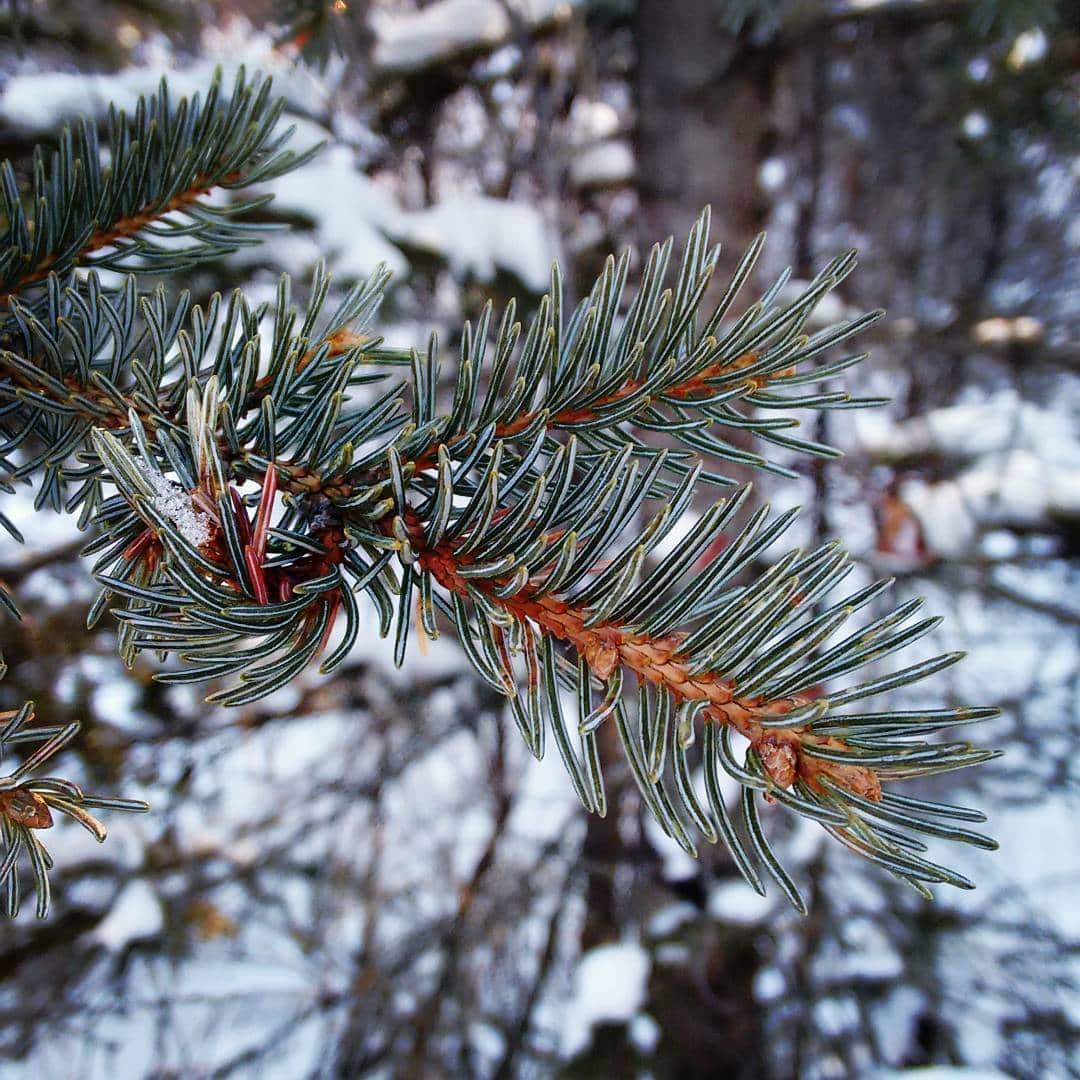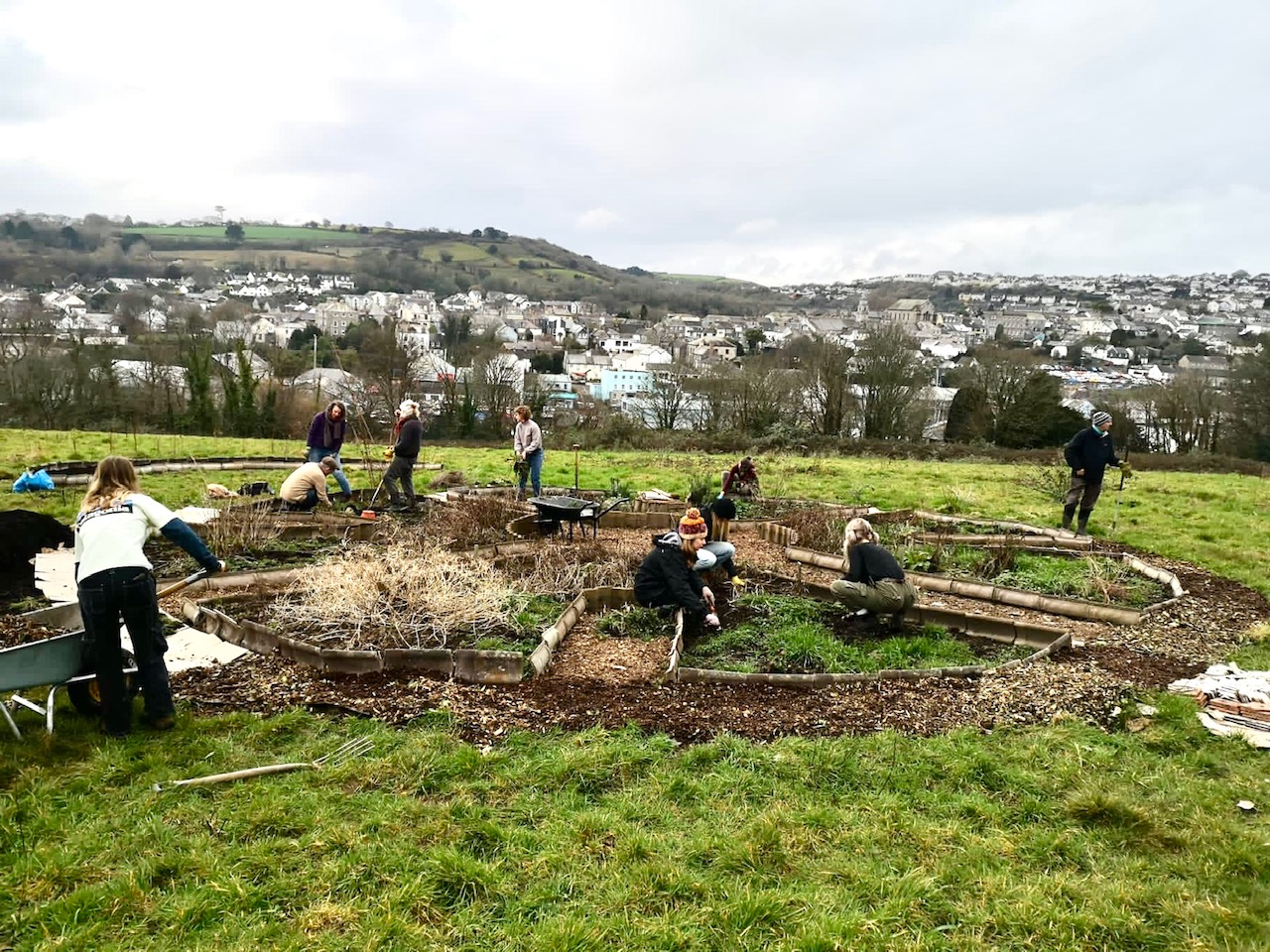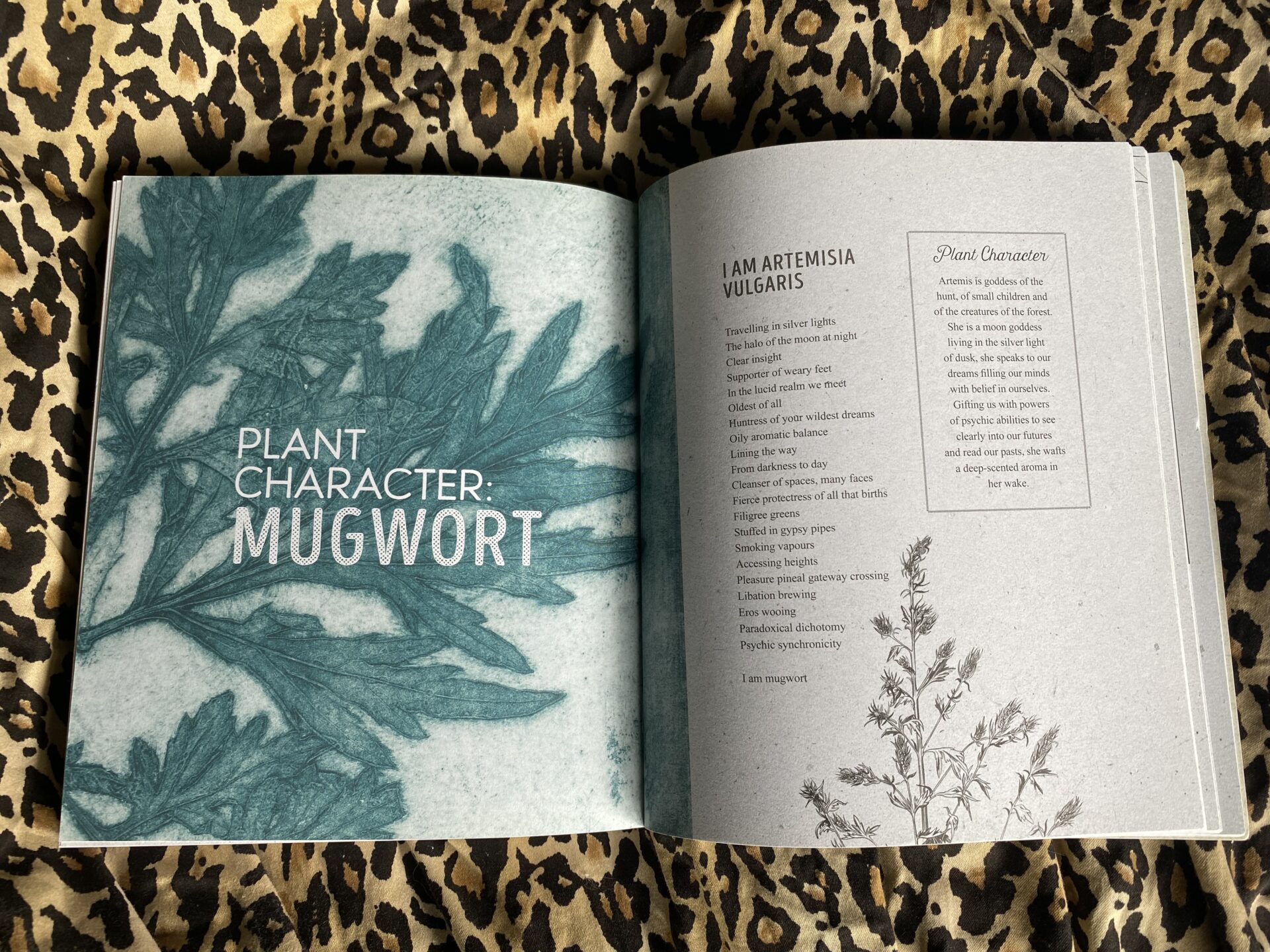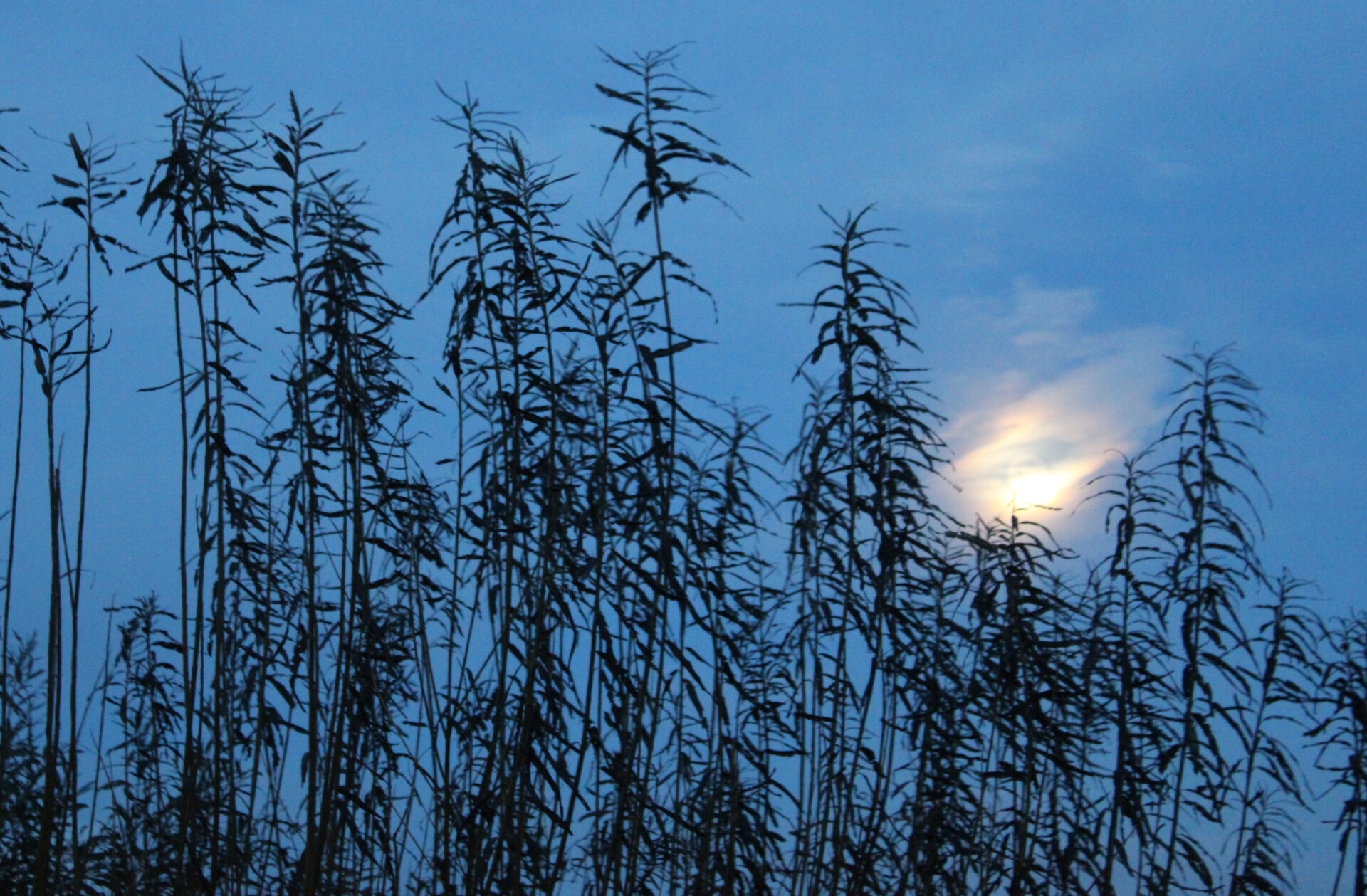Us Seed SistAs met Latifa many years ago now, a fellow herbalist and as passionate about plants as we are and a real lover of the Pine trees. Here we host some of her important work in Canada…a place we hope to visit one day in our futures……enjoy her words.
While studying herbal medicine in London I fell in love with many of the wild plants that grew around me. Many marvelous plant medicines were abundant—a great number growing like weeds. Moreover, the majority of plants I studied in the field of Western Herbal Medicine were indeed of European origin and flourished in their native soil. I became attached to them as friends and companions as I explored country lanes and busy city streets. I remember feeling a sense of dread at the thought of returning to my home of Calgary, Alberta in Canada. How would I adapt to losing access to so many of those friends who I counted on for food and medicine?
Nestled in the foothills of the Rocky Mountains, Calgary can be a difficult place to live if you do not know how to manage the long, cold winters. The growing season is relatively short, the climate dry, and unusual wind patterns called Chinooks make it difficult for many plants to thrive.
I will never forget a lesson from a fellow student, an elder woman, whom I was tutoring. Despite her love and enthusiasm for the practice of herbal medicine she had difficulty adapting to the academic model of learning. We would often share our personal thoughts over tea and baked potatoes. During one of our tutoring sessions I recall lamenting to her about the long winters locked in ice without a speck of green. She replied immediately, because her experience had taught her the practical usage of plants, that I would have to get to know the barks and roots.
Indeed, she was right about medicine being available in winter and I have since learned a great deal about not just bark and roots but buds, lichens, and—most dear to my heart—resinous conifer trees.
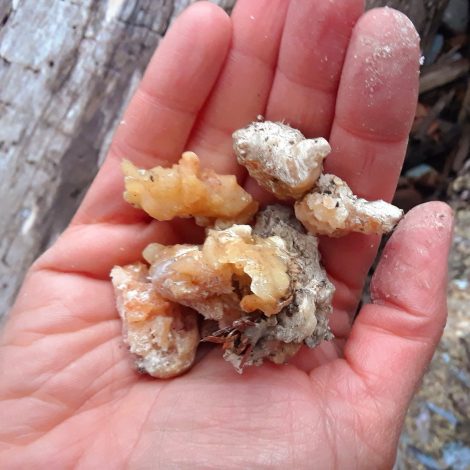
Spruce resin
When I returned to Canada I was pleased to find many old friends growing as abundantly as in London: Dandelion, Chickweed, Cleavers, Yellow Dock, Burdock, Mullein and Plantain were growing like weeds. It didn’t take me long, however, to realize that the politics of wild plant medicines in a colonized country are quite different than in Europe.
There already is a rich practice and history of plant medicine found among Indigenous people in Canada. These practices have been threatened by centuries of often-brutal colonial rule. Considerations should be made that take into account inappropriate use and harvesting of culturally significant native plant species. For example, White Sage (Salvia apiana) is an important ceremonial plant for the Indigenous people who use it. Over-harvesting and appropriative marketing exploit Indigenous culture without permission or consent which is problematic. While ethnobotanical research provides a wealth of useful information on using wild plant medicines, it is important to engage with contemporary Indigenous people to gain insight on boundaries related to plant medicine making. By learning the history of human-plant relationships we can learn to respect how some plants are essential to the cultural sovereignty of Indigenous people.
I still love the weeds and recognize they are here to stay, but my understanding of their presence in the landscape has evolved tremendously. My old plant friends from London are found in abundance in Alberta due to an intentional effort to dismantle the native flora and replace it with plants more familiar to settlers. Ploughing ancient grasslands to make room for more economically viable crops remains a common practice. In Canada it is estimated that between 70% and 90% of native grasslands have been lost. Temperate grasslands are one of the most endangered ecosystems worldwide, yet little effort has been made to protect and preserve what is left of the great plains where the mighty bison once roamed. Lacking tall trees and conspicuous iconic species like more renowned habitats such as the Amazon rainforest, grasslands are frequently underappreciated. Grasslands deserve to be protected in their own right, not just because humans can benefit from them, but it is worth mentioning that one of the most cherished herbal remedies Echinacea calls the prairies her home.
Protecting and appreciating wild plant medicines means a willingness to participate in a complex and nuanced dialogue about nature, people, and the planet. Harvesting wild plant medicines means taking responsibility for potential ecosystem disturbances. Sustainability must be on the forefront of everyone’s mind because our actions affect complex libraries of biological knowledge in the form of plants, lichens, animals, fungi, and other micro-organisms. The research available about native Canadian flora and fauna is extremely limited, and sadly ecosystems are destroyed faster than they are understood. For example, while massive declines in native bee populations is noted, the numbers of many species of bees has never even been measured, so the baseline data to demonstrate ongoing population declines doesn’t even exist.
Amidst the weight of ethical, moral, and environmental dilemmas there have moments when I just wanted to stick to only making medicine with weeds growing in “waste fields.” Yet to ignore that “waste fields” also long for their old friends: tall Needle and Thread grasses, fiery Horsemint, and wispy Prairie Smoke is to miss an unmistakable call of Mother Earth. Using native plant medicines is a way to remember that we are deeply connected to other living beings and the places they call home. While I do believe there is a place in Canada for sustainable wild harvesting of abundant native plant species, I now also realize that many wild plant medicines should be grown, and that by planting them we spread their seeds and make a plea for their return.
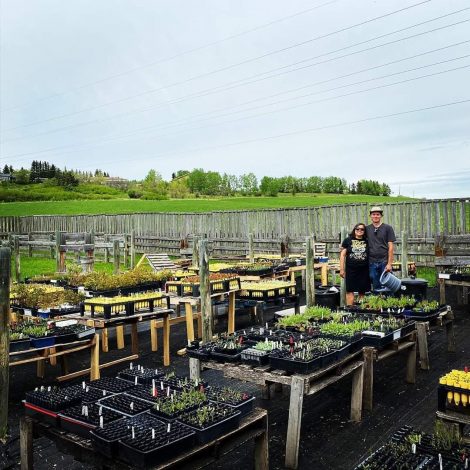
Recently my partner and I took over a small native plant nursery in Calgary called ALCLA Native Plants. My herbal practice has evolved to include caring for the future generations of wild plant medicines. Through education I try to teach others about the importance of reciprocity in medicine making. By growing more native species in our yards, parks, and boulevards we can build a relationship with wild plant medicines that is about giving and taking rather than just taking.
Each year brings new knowledge and wisdom as my plant friends and teachers share more through our deepening relationships. There are few books or scientific studies written about our native plants and so a great deal of knowledge comes directly from practice and intuitive relationship-building.
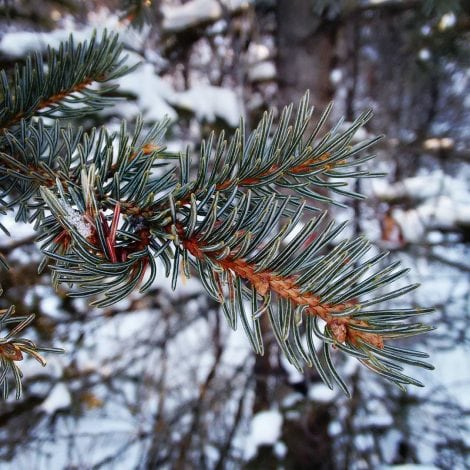
Picea glauca branch tip
I have come to learn to rely on conifer trees, during our long Canadian winters, to provide strength and support when few other plant medicines are readily accessible. Their deep green boughs are a daily reminder that things are not so frozen and dead despite the cold. White spruce (Picea glauca) is a commonly planted native species that can be seen in most urban areas of Calgary along with the closely related Colorado Blue Spruce (Picea pungens). Their needles and bark are full of volatile oils, resins, polysaccharides, lignans, and no doubt other diverse phytochemicals.
Spruce is characteristically bitter which makes it helpful for many digestive complaints. It is an ally when antimicrobials are needed. Traditional use as a cough, cold, and flu medicine is supported by research on the immune-modulating aspects of polysaccharides in the related Norway Spruce (Picea abies). The resin which oozes out of wounds and bark fissures on Spruce is particularly wonderful when made into a balm for wound-healing, a property which is supported by small clinical trials. I love to make a mouth wash using the resin which is great for dental hygiene and gum irritation. Recently, Spruce taught me that it is indicated for anxiety where strong, grounded support is needed.
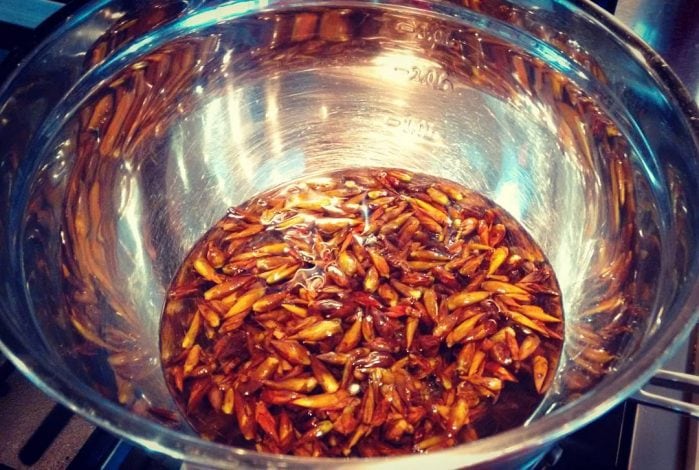
Populus balsamifera buds in oil
Another favourite of the early spring here is Balsam Poplar (Populus balsamifera). Related to willow, poplars can be used in much the same way as they both contain salicylates used for inflammation, pain, and fever. Here we love to use the spring buds which ooze a resin that honeybees famously turn into propolis. I should note, though, that honeybees are actually not native to the Americas. When harvesting, I take special care to take only from fallen branches to honour the tree and take only what is given. The lovely resin-covered buds can be steeped in oil or high-proof alcohol. Oils can be thickened into a Balm of Gilead which smells wonderful and is great for nerve, muscle and joint pain, skin irritations, sun burns, and insect bites. The oil or diluted tincture is excellent for sore throats and pain caused by mouth sores. Poplars are one of the first trees to flower in our frozen landscape and support deer, moose, elk and other animals, early insects and people.
It has never before been so clear to me that all the medicine we need is already around us; provided by Mother Nature. The decision to work with wild and native plant species comes with significant responsibility. We become stewards of plants and the complex ecosystems they support. With this we have a duty to respect the traditional medicine practices of Indigenous peoples. As herbalists and advocates of plant medicine we are as responsible for the health of the land as we are for the people we support.
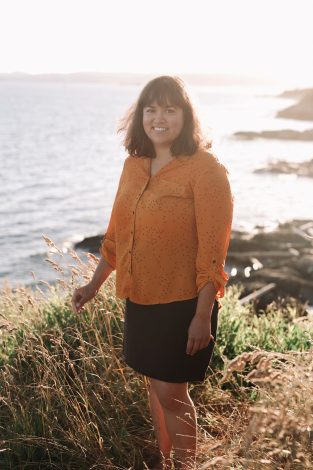
Bio:
Latifa Pelletier-Ahmed is a herbalist, botanist, wild forager and educator based in Calgary, Alberta, Canada, Treaty 7 Territory. She runs a sliding-scale herbal medicine practice, and is particularly interested in reconnecting people to nature to create well-being in individuals and communities. She regularly runs retreats, workshops and plant walks to teach people how to safely identify and use wild plants as food and medicine. She is co-owner of ALCLA Native Plants, a native plant nursery in Calgary, Alberta. She is a former faculty member of Phytotherapy at Pacific Rim College of Holistic Medicine and Sustainable Living in Victoria, BC. Latifa is qualified with a Master’s of Science in Herbal Medicine from Middlesex University and a Bachelor of Science in Botany from the University of Calgary.
To learn more visit: www.latifasherbs.com

